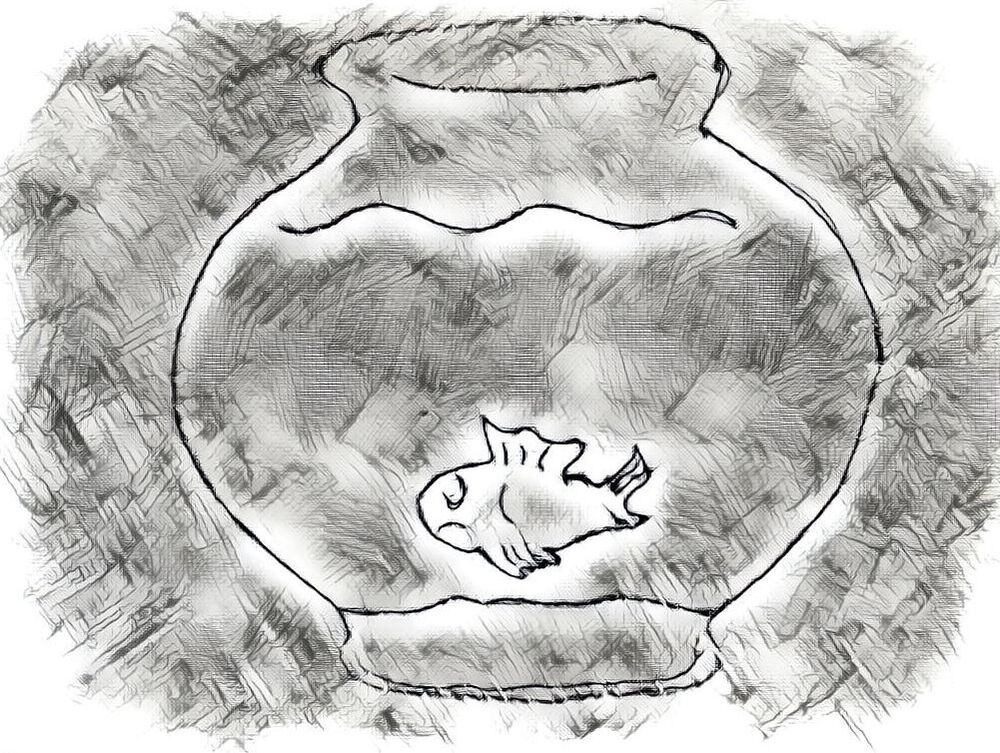
I can’t stop thinking about the intoxicated, lonely fish swimming despondently at the bottom of her tiny, boring tank with nothing to do. You may wonder how this fish became intoxicated. It turns out scientists forced the fish to imbibe ethanol for two weeks and then cut her off abruptly forcing her into a severe state of withdrawal. Why? Unfortunately for the poor fish, it seems that fish brains have remarkably similar neurochemistry to our own. Consequently, according to a recent science article in the New York Times, scientists are using “depressed” fish to test the effectiveness of antidepressants. The fish and human parallels intrigue, sadden and disturb me on many levels.
First it seems strange to me that an intoxicated fish in alcohol withdrawal would be a good model for depression. Sick and traumatized, absolutely, but depressed? I am not so sure. Since it’s obviously difficult to engage in dialogue with a fish to assess its mood, human scientists determined that fish meet the pesce criteria for depression if they fail to explore their environment, choosing to hang out forlornly at the bottom of the tank instead of curiously exploring the upper regions. But in this case remember the fish has been on an ethanol diet for two weeks. To put it in human terms, imagine for a moment how you would feel if after a two week drinking binge you were experiencing the worst hangover of your life and were then locked into an inescapable white walled room with nothing in it, not even a chair or bed. Would you curiously explore or would you curl up on the floor in a ball covering your eyes to avoid the glare of the lights and to avoid being stared at? Would that not be a perfectly normal response to those particular circumstances?
It appears fish and humans not only share similar neurochemical soups, but also a nonspecific casualness with which scientists pathologize normal responses to stressed out, perhaps even over-intoxicated lives and label it depression. Such overuse makes the word depression practically meaningless. In the fish’s case, she was clearly in a state of alcohol withdrawal and trauma. That’s not depression. Likewise, humans who complain of feeling sad or overwhelmed to their equally stressed out physicians, are all too often quickly labeled depressed and handed a script for the doctor’s antidepressant of choice. Most physicians do not have the time or energy to ask questions for clarity and context about why you might be feeling this way. As a result, one out of four women and one out of seven men in this country are now on these meds, even though research has shown repeatedly that although these meds may be helpful for severe depression, they are no more effective than sugar pillsl for mild to moderate depression.
Ironically, we share another commonality with fish. Thanks to the millions of prescriptions of antidepressants passing through humans bodies and being excreted into our toilets, scientists have discovered that the brains of fish in the Great Lakes have high concentrations of these same substances. If these meds work so well on helping our hungover fish recover then there should be a lot of happy fish swimming around right now. What scientists are discovering instead is that these meds are changing the survival instincts of the fish. Instead of hiding or swimming away from predators, they no longer even care. Their emotional messenger system that guides and alerts them--and us-- to danger and the need for change is simply turned off. This same numbness is what most of my patients report when they come to see me, because they are tired of living their lives medicated and disconnected from their feelings and are seeking other options and possibilities. Although antidepressants may ease some of the dark unwanted feelings, they also numb the feelings of joy and love that make life meaningful. This disconnects us from our ability to see what needs to be changed.
I am not saying that people (or traumatized, hungover fish) can’t sink into deep, dark moods of helplessness and despair that may require support and help. What I am suggesting is that all too often sadness, grief, overwhelm, anxiety, irritability and boredom are too often subdued with medications, rather than first at least considering the power and possibility of support and simple lifestyle changes. The fish would undoubtedly have benefited from a plant that would be worth exploring or a friend to explore it with, not to mention a healthier diet without the booze.
Sometimes what we call “depression” is really an emotional messenger at first whispering, then screaming that we are stuck in our own boring fish bowl and what we need is not a medication but a change. Sometimes that change can be as simple as just having someone to talk to so we don’t feel so alone; or perhaps we need our own plants or a pet or a freshly painted wall to replace the dreary white one. Sometimes, however, the change required is more drastic. Maybe our body is calling for exercise and less time sitting in front of the TV. Maybe we need a new hobby, group of friends or a new job. Maybe we need to escape our computers and cubicles and get outside. Maybe we need to stop eating “chicken” mcnuggets and offer our bodies something nourishing and nutritious. Maybe we need to slow down, relax and not fill every waking moment with activity and busyness. Maybe it’s not medication that we need but a nourished, rested body and curious mind so we have the energy and motivation to explore our surroundings and see what’s beyond the confines of our self-created fish bowl. That’s where we are different from fish. We can choose to make changes.
Resources
http://pubs.acs.org/doi/abs/10.1021/acs.est.7b02912
http://www.freep.com/story/news/2017/09/01/antidepressants-great-lakes-fish/621938001/

 RSS Feed
RSS Feed